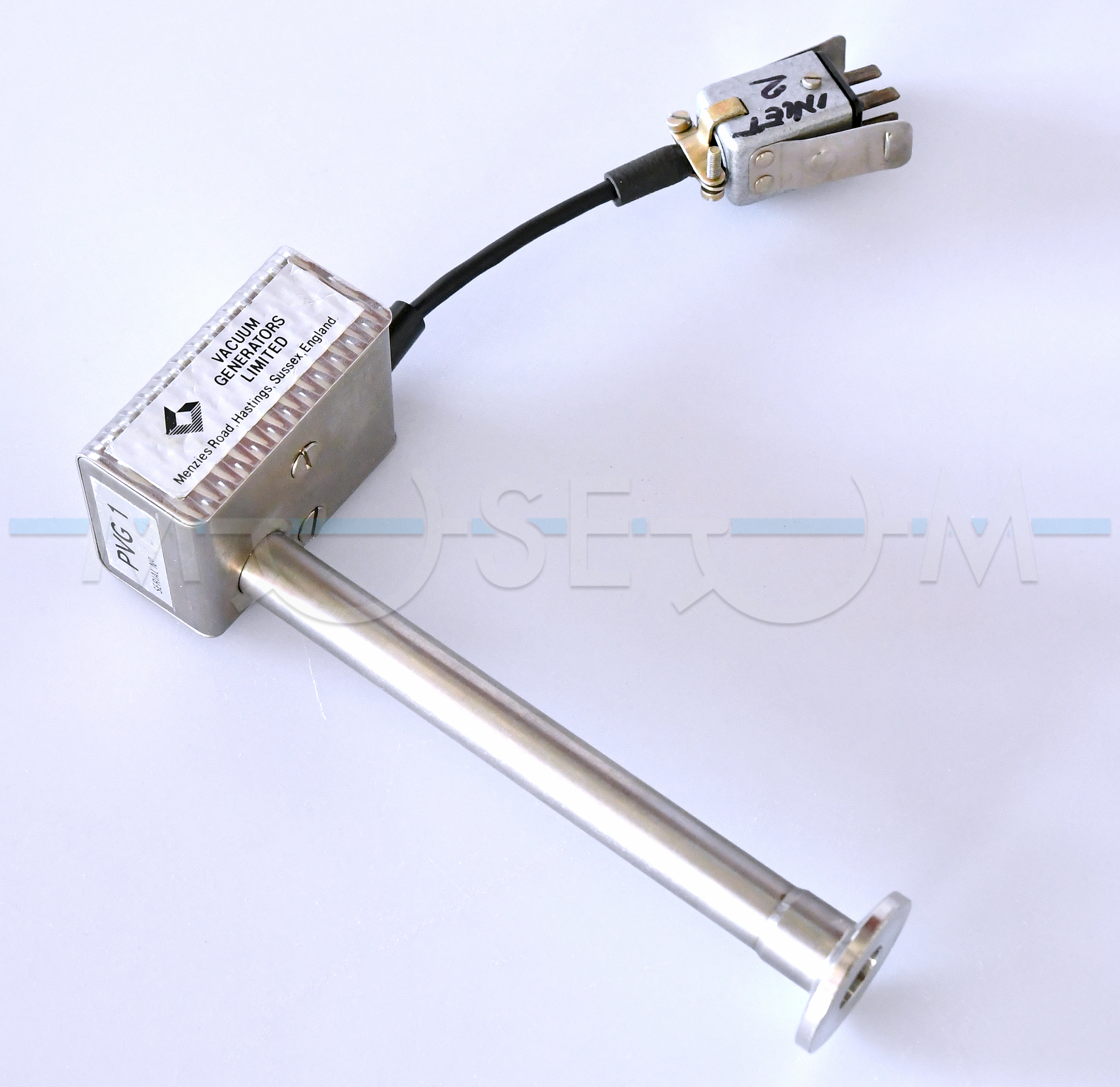Categories of exhibits
Pirani vacuum gauge
Exhibit no. 122
Pirani gauge is a device that uses thermal conductivity for the measurement of the pressures in vacuum systems. In this gauge, a filament (usually gold-plated tungsten or platinum) is heated up to around 100 to 150 °C by the passage of a current. As gas molecules collide with the sensing filament, it loses heat. The filament forms one arm of a Wheatstone bridge (an electrical circuit used to measure an unknown electrical resistance by balancing two legs of a bridge circuit). In gauges with variable resistance, the sensing filament is heated with a constant current. As gas pressure increases, the temperature of the filament decreases so that the bridge becomes out of balance. The bridge current serves as a measure for the gas pressure. In the gauges built today, the heating voltage applied to this bridge is regulated so that the resistance and therefore the temperature of the filament remain constant, regardless of the heat loss. This means that the bridge is always balanced and the voltage applied to the bridge is a measure of the pressure. Pirani gauges have a measuring range from 10-4 to 1000 Torr.
The exhibit is a Pirani gauge head model PVG1 made by VG Hastings, England. It comes from the ZAB EQ double-focusing mass spectrometer manufactured by VG Analytical Ltd. in 1986. The gauge operating in the pressure range of 0.5 - 10-3 torr was used to monitor roughing pressure for diffusion pumps. When the pressure rose above 0.1 mbar, a relay, which controlled power to the pump heaters was de-energized and the pumps turned off. High roughing pressure is dangerous because it may cause the pumps to stop and oil from the pump to enter the mass spectrometer.





